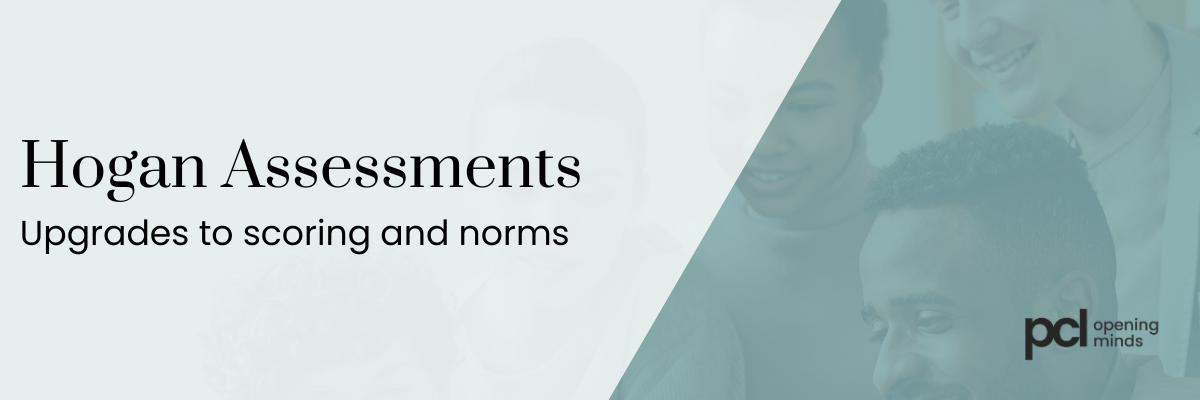
From June 1st, Hogan will be rolling out the following scoring and norms upgrades:
- New scoring and norms for the HPI and HDS
- New norms only (same scoring process) for the MVPI
These exciting upgrades are happening as part of ongoing work to continuously improve the precision of the assessments and will be in place for clients who use off-the-shelf reports. This change will be automatic, there’s no additional cost and you can interpret main scale percentile scores and subscale “brick” counts in the exact same way you currently do.
PCL’s Chief Psychologist, Gillian Hyde, runs through these changes in the following webinar
Further information
Scoring for HPI and HDS
The HPI and HDS both originally used a two-point True/False response scale. In September 2018 Hogan started collecting responses on the HPI and HDS using a four-point response scale (Strongly Agree, Agree, Disagree, and Strongly Disagree). The upgrade to a four-point response scale increases the range of possible responses, which allows participants to choose answers that better reflect how they feel about each HPI and HDS item. This approach allows for more precise scoring of the main scales and subscales, which further enhances the already considerable interpretive power of the assessments.
Norms for HPI, HDS and MVPI
With the move to a four-point response scale, a new data set was required in order to provide the appropriate corresponding percentile scores. Hogan started collecting this norm data in 2018 and finalised this new global norm in late 2022.
Below are the numbers in the UK and Global 2023 norm groups respectively, with the previous number in brackets for comparison.
UK
HPI: 74,882 (64,768)
HDS: 60,895 (13,063)
MVPI: 51,253 (9,867)
Global
HPI: 153,223 (171,071)
HDS: 115,793 (83,580)
MVPI: 99,568 (81,376)
What are the benefits of using the upgraded scoring and norms?
Primarily, Hogan expect this increased precision will result in an improved feedback experience for participants. Because they can now make finer distinctions in how people score, participants should find their results to be even more “on target,” particularly at the subscale level. The data will also be more representative across a variety of factors, including demographics, job level, language, and nationality, which will help Hogan provide more nuanced, precise, and relevant results. Notable changes are:
Gender representation improved by 8 points
Previous Norm: 42% women/58% men
New Norm: 46% women/54% men
Number of countries/territories increased by 11
Previous Norm: 179
New Norm: 190
Number of languages and dialects up to 48 total, with Lithuanian, Montenegrin, and Slovene being new additions.
As always, please do get in touch if you need further information. We are here to support you.